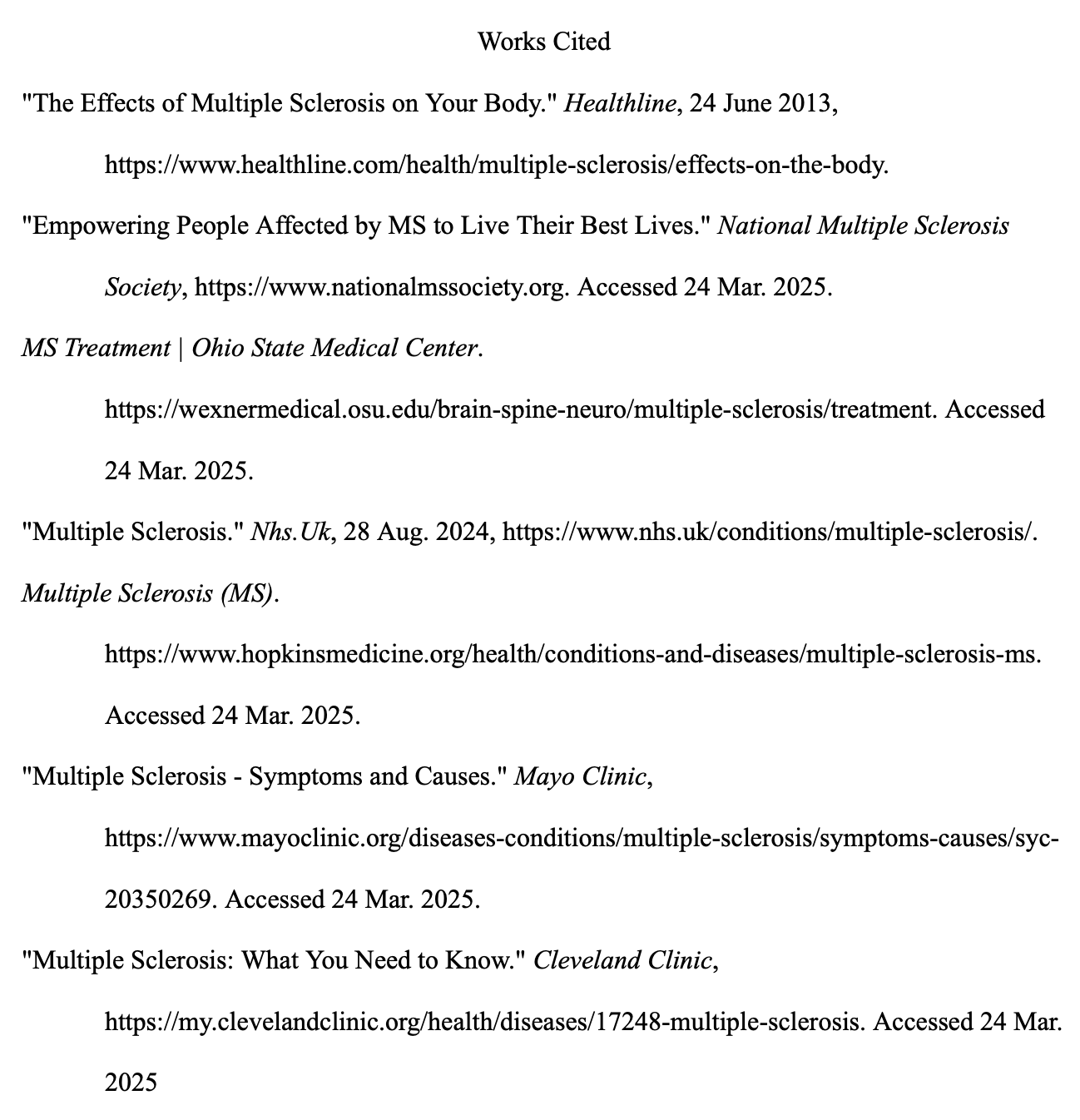Multiple Sclerosis: An Overview
Multiple Sclerosis: An Overview
By: Deepika Miryala - Clear Falls High School
706 Words
Abstract
Multiple sclerosis is a condition that has an unfortunate lack of information despite its relative prevalence and unpleasant effects. However, many articles and studies have been published about it, and we’re beginning to shine light on the origins, consequences, and potential treatments. Several causes and risk factors involving environmental circumstances and life choices have been identified, and populations at heightened risk have also been unveiled. Additionally, the symptoms and impacts of physiology have been observed, allowing comprehensive analysis to be performed on how patients with MS struggle. We’ve gained a decent understanding of the mental and physical tolls MS can have on various individuals. Lastly, while no real cure has been developed, there are a multitude of available treatment options involving both medications and therapies, and several lifestyle adjustments have been recommended by professionals for those with multiple sclerosis. These findings offer hope that knowledge of the condition will continue to expand with the ultimate goal of putting an end to multiple sclerosis.
Introduction
According to an article from Johns Hopkins Medicine, Multiple Sclerosis, or MS, is considered a chronic autoimmune disorder in which the body attacks its own central nervous system. Specifically, a protein and fatty substance known as myelin that surrounds and guards nerve fibers with sheaths to protein is damaged. The scar tissue that forms is called sclerosis, hence the condition’s name. The affected nerves lose the ability to properly conduct electrical impulses, which is devastating to a person’s physiology.
Causes and Risk Factors
While the direct cause of MS is unknown, the National Multiple Sclerosis Society explains some hypotheses. For instance, some research backs up the idea that MS patients have a certain combination of genes that can be triggered by environmental factors. To hone in on the causes, researchers are primarily looking at immunology, epidemiology, genetics, and infectious agents.
Additionally, some risk factors have been identified. Cleveland Clinic describes how low levels of vitamin D, childhood obesity, and smoking and exposure to others toxins or viruses could potentially heighten the chance of developing multiple sclerosis. Furthermore, studies suggest that people between 20 and 40, those of Northern European descent, and females may be more likely to struggle with the disorder.
Symptoms and Effects on Physiology
A Mayo Clinic article outlines some of the symptoms, including numbness, electric-shock sensations, poor coordination and overall weakness, vision problems, and fatigue. On a more neurological level, patients can experience mood swings and problems with memory, thinking processes, and comprehending new information.
Alongside these symptoms, there are other physiological effects of MS. A Healthline post reviewed by Dr. Heidi Moawad details how patients can experience sensory changes and have a hard time focusing. Dizziness and vertigo can occur, and people may overall be in a more confused state of mind. There can be a general sense of pain, particularly in the muscles, and normal speaking can be impaired. Finally, MS increases the chance of developing osteoporosis, or an abnormally low bone density.
Treatments
While there is currently no real cure for multiple sclerosis, there are ways to slow its progress and relieve symptoms. Patients should have access to specialists such as an MS nurse, a neurologist, and a physiotherapist and occupational therapist who will provide a supportive team for recovery. According to the United Kingdom’s National Health Service, medicinal steroids can lessen swelling and ease nerve damage. For muscle pain and usage problems, relaxants can be a helpful solution. Additionally, disease-modifying therapies can reduce the frequency and severity of relapses.
In terms of overall life adjustments and therapies, The Ohio State University Wexner Medical Center offers options such as physical and speech therapy, cognitive rehabilitation, and considering assistive devices. It’s important for people living with MS to maintain a healthy diet and stay physically active. Additionally, those with the disorder have to continue living life as normally as possible, and view MS as an obstacle but not something that will destroy their life. Experts recommend they keep working and spending time with loved ones, and make necessary home adjustments as needed. By supporting those with multiple sclerosis, we can continue working hard to discover preventative measures and cures for the disorder together.
